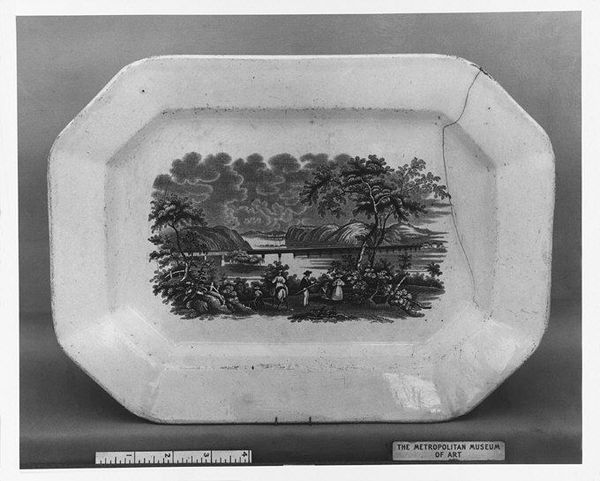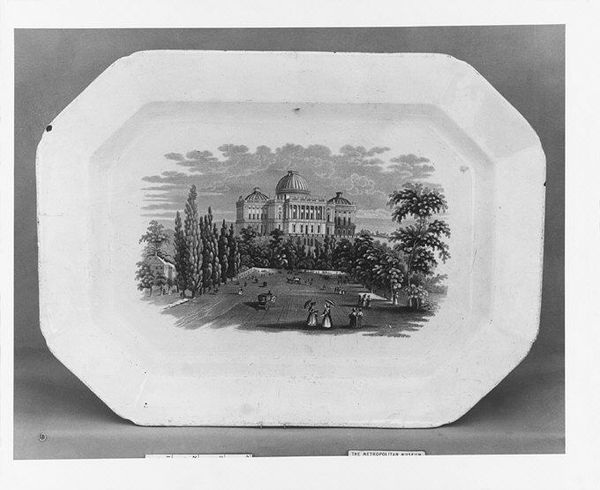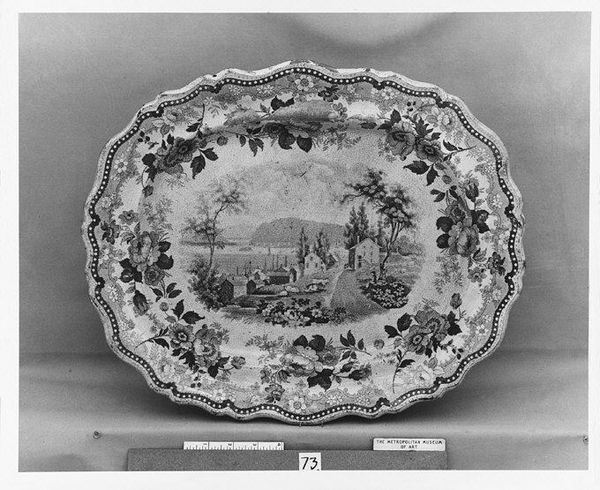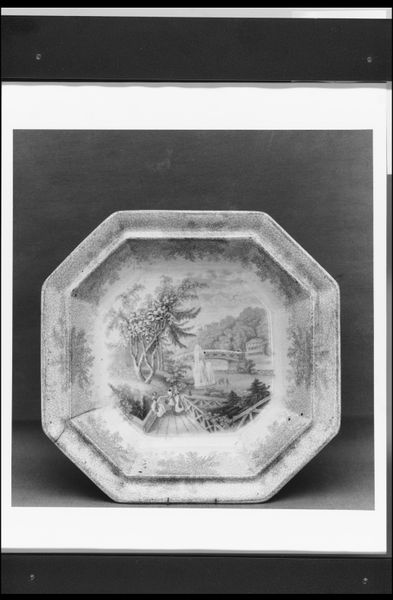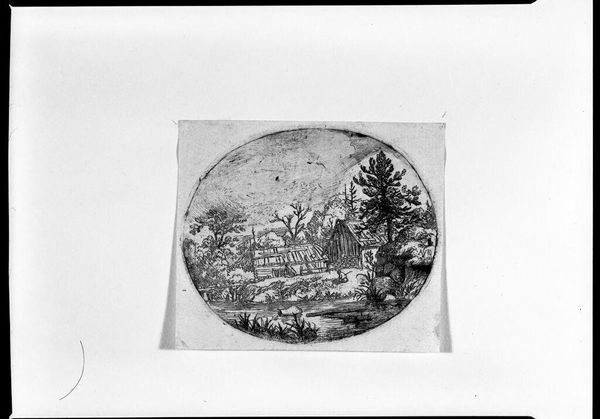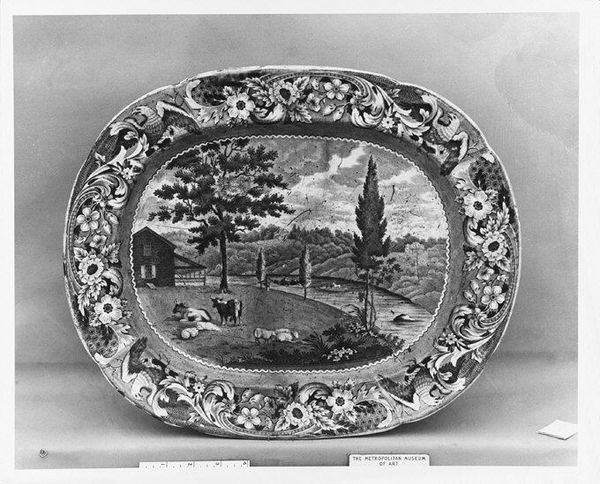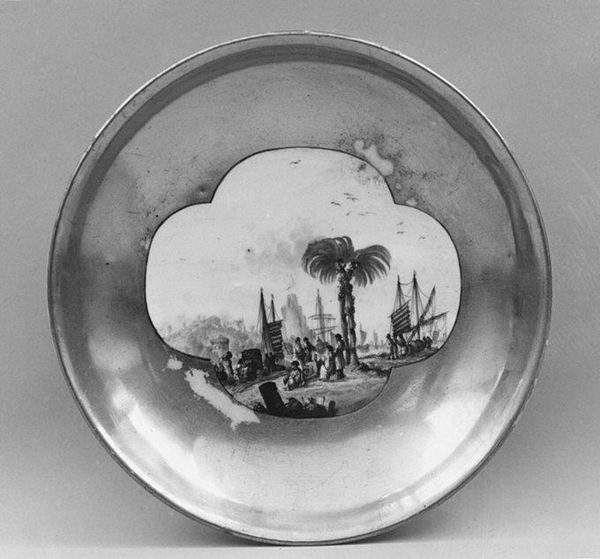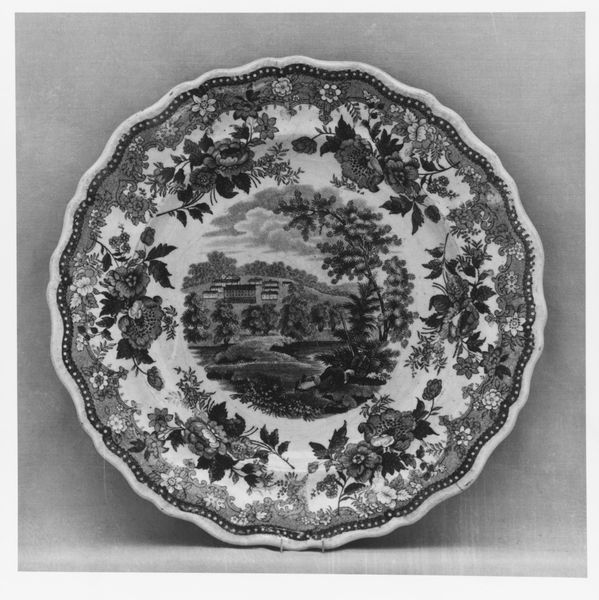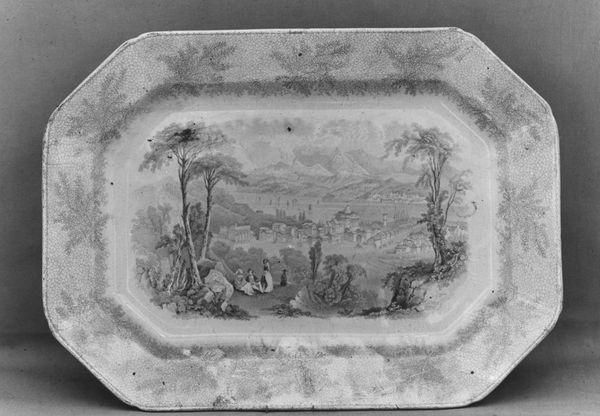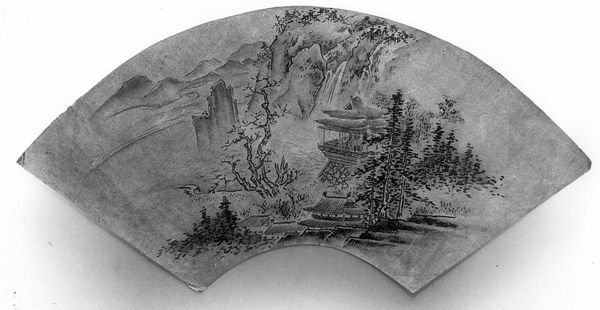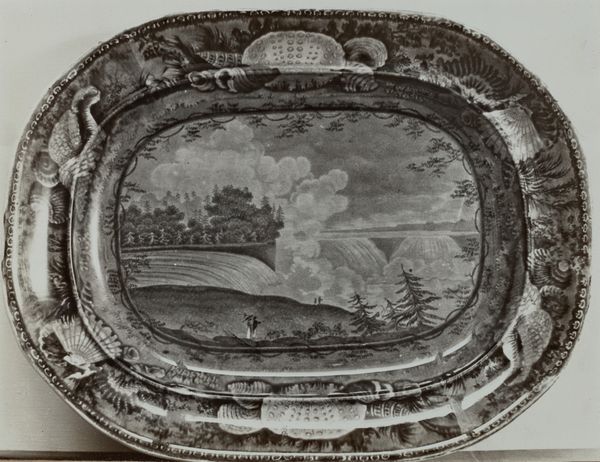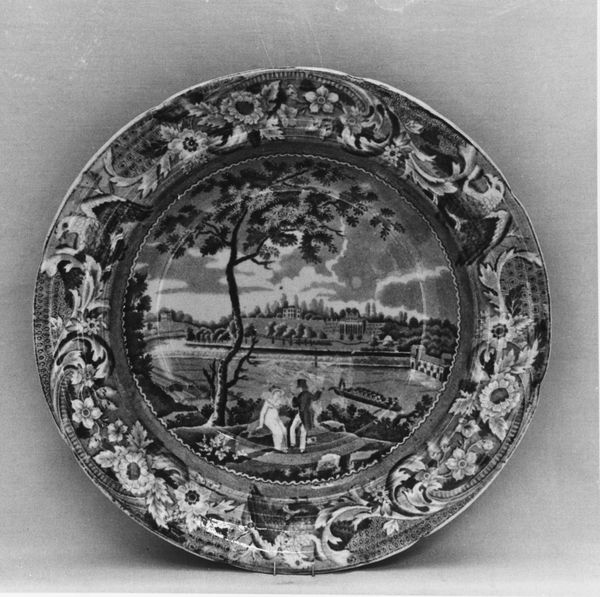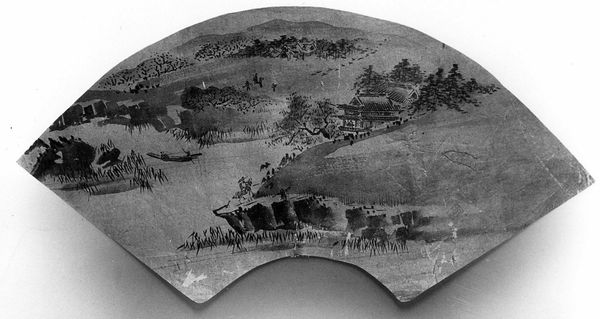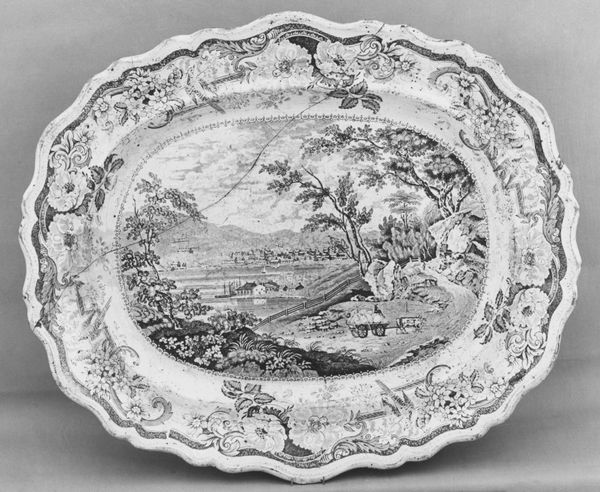
print, ceramic, earthenware
# print
#
landscape
#
ceramic
#
earthenware
#
geometric
#
mountain
#
line
Dimensions: 11 1/4 x 15 1/4 in. (28.6 x 38.7 cm)
Copyright: Public Domain
Curator: Welcome. Here we have a ceramic Platter made sometime between 1837 and 1857 by William Ridgway & Co. in Staffordshire, England. It uses earthenware with printed decoration, now residing here at the Met. What’s your initial read? Editor: Stark. A certain austerity. Even though it's a landscape, that monochromatic rendering and the sharp geometric form of the platter give it an almost graphic quality. What’s interesting about the choice to put this particular landscape on a piece of tableware? Curator: It certainly invites contemplation beyond mere utility. We need to understand Staffordshire pottery in the context of 19th-century British industry and colonialism. Landscape imagery, mass-produced on functional objects, reflects the Victorian era's evolving relationship with both the domestic sphere and the wider world, subtly perpetuating specific ideas around progress, taste, and even empire. Editor: And the symbols, I notice that mountain range repeats—the imagery seems designed to conjure the sublime; those almost theatrical peaks mirroring each other across a stretch of water. Are we meant to read those peaks as symbolic of a sort of challenge, or even mastery? Curator: Potentially. The mountainous landscape motif does indeed represent more than just picturesque scenery. It signifies the conquering of nature, the imposing geometry perhaps further reiterating claims to land. Further research on printed landscapes of the time could illuminate specific ideologies perpetuated through decorative imagery. Editor: So even a humble platter becomes a stage. And its geometric design and clean lines really strike me—something about that intentional choice stands out. A blend of artifice and nature is on full display here. The crack traversing its corner almost tells the story of inevitable fractures, literally in this instance! Curator: Precisely. Its material vulnerability complicates any assertions of steadfast stability or control implied by its scene and period of production. A telling sign, I'd say. Editor: Yes. And that print process of replication creates an illusion of access; the ability to transport a distant world directly into someone's home. Well, this has given me plenty to chew on. It goes to show, really, that you never quite know where a platter might take you! Curator: Indeed. This seemingly simple object offers a lens through which we may scrutinize history, technology, gendered spaces, and imperial visions—truly quite a full serving.
Comments
No comments
Be the first to comment and join the conversation on the ultimate creative platform.
